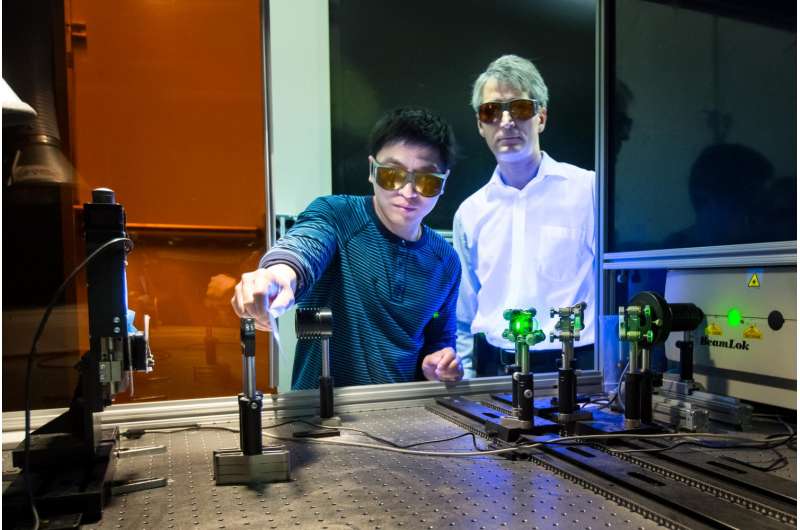Laser treatment, bonding potential road to success for carbon fiber

Joining carbon fiber composites and aluminum for lightweight cars and other multi-material high-end products could become less expensive and the joints more robust because of a new method that harnesses a laser's power and precision.
The process, developed by a team led by Adrian Sabau of the Department of Energy's Oak Ridge National Laboratory, would replace the practice of preparing the surface of the materials by hand using abrasive pads, grit blasting and environmentally harmful solvents. Using a laser to remove layers of material from surfaces prior to bonding improves the performance of the joints and provides a path toward automation for high-volume use.
"Our technique is vastly superior to the conventional surface preparation methods," Sabau said. "Combined with the potentially dramatic reduction in the cost of carbon fiber polymer composites, this represents an important step toward increasing the use of this lightweight high-strength material in automobiles, which could reduce the weight of cars and trucks by 750 pounds."
The surface treatment of aluminum and carbon fiber polymer composite is a critical step in the adhesive joining process, which directly affects the quality of bonded joints. Aluminum surfaces typically contain oils and other contaminants from production rolling operations while carbon fiber surfaces often contain mold releases.
"These surface contaminants affect surface energies and the quality of adhesion, so it is critical that they are removed," said Sabau, adding that the laser also penetrates into the top resin layer, leaving individual carbon fibers exposed for direct bonding to the adhesive and increasing the surface area for better adhesion.
Test results support Sabau's optimism as single-lap shear joint specimens showed strength, maximum load and displacement at maximum load were increased by 15 percent, 16 percent and 100 percent, respectively, over those measured for the baseline joints. Also, joints made with laser-structured surfaces can absorb approximately 200 percent more energy than the conventionally prepared baseline joints, researchers reported.
Sabau noted that the process also doubles the energy absorption in the joints, which has implications for crash safety and potential use in armor for people and vehicles. Tim Skszek of Magna International (Troy, Michigan), a project partner, shares Sabau's enthusiasm.
"The results are most encouraging, enabling the automated processing of a multi-material carbon fiber-aluminum joint," Skszek said. "With this work, we were able to focus on addressing the gaps in technology and commercial use, and we look forward to applying these findings to products."
Sabau will present the team's findings at The Society for the Advancement of Materials and Process Engineering conference May 23-26 in Long Beach, California (www.sampelongbeach.org).
Provided by Oak Ridge National Laboratory


















